A continuation of a trip which started on Sept 10. and after time spent in the UK. (here)
Driving to Hethrow Airport from Cambridge UK, (were we stayed for 2 day) very early morning, took us over 2 hours, and then 3 more hours wait, for this last flight of the season to Corsica, as it was delayed..
There are relatively very few flights per a week to Corsica both from France or from London, and those from London stop at the end of the Summer tourist season.

Corsica island, of about 365K inhabitants, is the fourth-largest island in the Mediterranean. It lies southeast of the French mainland, (one of the 18 regions of France) immediately north of the Italian larger island of Sardinia, the nearest land mass. (which we planned to visit as well)
Corsica island is 183 km long at its longest, 83 km wide at its widest,
By the time we landed in Figari - South Corsica airport ,( the third largest on the island opened in 1975) the evening had already set down.

.The drive to our hotel in Bonifacio, on T40, was short (only 30 minutes) but done in pitch black, with only occasional blinking lightening, a theatrical staging coloring the horizon, to the sheets of rain loads dampening the rest of that night.

Corsica

Corsica is best known for Emperor of the French, Napoleon Bonaparte, (1769 – 1821) who was a native, born in Ajaccio:. His ancestral home, Maison Bonaparte, is a pilgrimage attraction to visitors, and a museum. which we intended to visit, later in the trip.
The rugged island also became known for the large number of specialized mercenary soldiers and officers it produced and dispatched.

A single chain of mountains makes up two-thirds of the island, with Monte Cinto as the highest peak at 2,706 m . Around 120 other summits and 200 very mountainous beaches, makes the acceptability and serpentine driving around the island very challenging.
After a brief occupation by the Carthaginians, colonization by the ancient Greeks, and an only slightly longer occupation by the Etruscans, the island was incorporated by the Roman Republic at the end of the First Punic War and, with Sardinia, in 238 BC became a province of the Roman Republic.
The island produced sheep, honey, resin and wax, and exported many slaves, not well considered, because of their fierce and rebellious character.
Moreover, it was known for its cheap wines, exported to Rome, and was used as a place of exile, one of the most famous being the Roman philosopher Seneca
The island was invaded by vandals (456 AD) became part of the Kingdom of the Lombards. This made it a dependency of the March of Tuscany,
Pisa and Genoa together freed the island from the threat of Arab invasion ( Saracen" or "Moorish from North Africa 900-1420 AD)
After that, the island came under the influence of the Republic of Pisa
King of Aragon, in 1296 received from the Pope the investiture over Sardinia and Corsica
Corsica was also ruled by the Republic of Genoa from 1284 to 1755.
La Dame de Bonifacio -The Lady of Bonifacio
The Great Ancestress - has not the age of "Lucy", but she still dates from the PreNeolithic
and has just over 8 000 years.

A skeleton of a woman (about 35 years old ) who lived in the Mesolithic period is named
Lady of Bonifacio. It was found in 1972 , north of Bonifacio,in a rock shelter called Araguina-Sennola, which is classified as Historical Monument.
Archeologists François de Lanfranchi (1926–2024) and Michel-Claude Weiss (1939–2021) found and excavated the skeleton, dated to an age of about 9100 to 9900 years and is one of the oldest on Corsica.

An independent Corsican Republic was proclaimed in 1755 and remained sovereign until 1769 when the island was conquered by France
In 1768, Genoa officially ceded it to Louis XV of France as part of a pledge for the debts incurred France annexed the island in 1769
The Corsican Flag

Adopted in 1755 the Corsican flag is known as the Bandera Corsa or Testa Mora, - a white background with a black Moor's head in profile wearing a white bandana:
Moor's head: Represents Corsica's fight for independence and freedom
Bandana: Originally placed over the eyes to symbolize servitude, but raised to the forehead to signify liberation
White background: Symbolizes peace and purity
The flag, which is an add choice to the foreign eye, is a strong emblem of the island's culture and identity,
It is often displayed at local festivals, cultural and sporting events. as well as in many cafes , restaurants and private homes.
The Rocky View Surrounding Bonafacio

Bonifacio

Bonifacio's unique geographical position, at the southern tip of Corsica, combined with its beautifully preserved medieval architecture, makes it a must-visit destination when exploring Corsica

Named after Boniface II (834-838) from Tuscany, who fortified it, the enchanting ancient town is perched on a dramatic limestone cliff hanging precariously over the Tyrrhenian Sea, and offers one of the most stunning coastal settings in Europe.
Bonifacio is the setting of Guy de Maupassant's short story "A Vendetta"

The dramatic landscapes and spectacular views, which the town offers extend along Corsica’s coastline and beyond, all the way to the neighboring island of Sardinia.
The town's charm and proximity to idyllic beaches makes it a popular tourist destination in the summer, predominantly for residents of mainland France.
who are attracted to its , historical depth. and tasty cuisine as well.

The town is divided into two distinct areas:

The Vieille Ville (Old Town or the upper city )within a 9th-C citadel, atop the cliff,
Bonifacio's Bastion de l’Etendard houses a small museum with the towns' history.

The bustling Harbour area below, on the promontory
Separated from Sardinia by the Strait of Bonifacio. the town is placed on the best and only major harbor of the southern coast.

The King of Aragon's Staircase consists of
187 ancient steps carved into the limestone cliff at a 45-degree incline on
the southern cliff-face
Despite the legend, linking the staircase to the Alfonso king, in reality the staircase was built by Franciscan monks in order to reach drinking water from a well at the bottom.
The 12-m gap between the last step and the sea males the staircase accessible to the public, only from the top of the old town.

The staircase faces the southeast, toward the uninhabited collection of the small Lavezzi Islands, a nature reserve, of granite boulders, reefs sandy beaches. and bird colony, about 4 km from the Corsican mainland in the Strait of Bonifacio .
The city and its fortifications extend for some distance along the cliff-tops, which are at about 70 meters (230 ft) elevation. The cliffs have been undercut by the ocean so that the buildings, which have been placed on the very edge of the precipice, appear to overhang it. The appearance from the sea is of a white city gleaming in the sun and suspended over the rough waters below.

The citadel whose fortified walls lend the town an aura of impregnability. was built in the 9th c and with the foundation of the city, and has been reconstructed and renovated many times since its construction. Most recently it was an administrative center for the French Foreign Legion.

There are 2 Genoese towers

Vieille Ville: the old center on top, has been restored and offers a fascinating and gently bustling maze of streets, alleyways, historic buildings churches, chapels, palazzi and many other charms. as brasseries, cafés and bars, that spill out onto the pavements and are dotted with piazzas, craft shops and boutiques.

Sitting at the western tip of the promontory is the marine cemetery, an atmospheric and panoramic spot offering a great gaze out to the sea and its beauty.

A restaurant we enjoyed at the upper town
Stella D'Oro - Chez Jules Gastronomic
7 rue Doria. 0495730363

The Promenade by the Harbor below the Old City

A row of restaurants, small hotels and boutiques line up the small harbor


29 Quai Banda Del Ferro +33 4 95 73 07 50
Very good sea food placed on the Marina, which we enjoyed very much

The Hotel we stayed at :
Best Western Hotel du Roy D'Aragon - Bonificio
13 Quai Jérôme Comparetti, 04 95 73 03 99
The renovated 38 rooms hotel is situated at the marina of the Port of Bonifacio, and is close to many shops, bars, restaurants, but not easy to access with a car
The white rock view from the hotel
Having a parking card, for one of the towns public parking lots, furnished, by the hotel but which got swallowed in the exit payment machine, got us in trouble with the hotel,
That was when the French-Corsican lost their charms in our eyes..
Enchanting Beaches by Bonaficiao

Very near Bonifacio there are 2 popular beach spots which we enjoy frequenting ,
Both are easy access beach by car, Many of the beaches and the coves around the island though beautiful, are accessible only by walking off the main driving route

East of Benifacio is : Plage de Piantarella
Bonifacio's sportiest beach, offering all kinds of water sports , kite surfers and windsurfers, motor boats rental
panoramic view of the island of Lavezzu and most beautiful lagoon that borders a superb nature reserve, the Ile de Piana


West of Benifacio is: Plage du Tonnara
Famous for its tranquillity and only 10 minutes from Bonifacio, in the direction of Ajaccio, this beach is a paradise for surfers
Another beach visited

approximately 400 meters long of beautiful beach and crystal clear waters by fine white sand, located near the scenic Route des Falaises, which offers stunning views of the coastline. It is named after the Fazzio family, who have owned and operated a nearby beachfront restaurant for over 50 years.

TO BE CONTINUED....

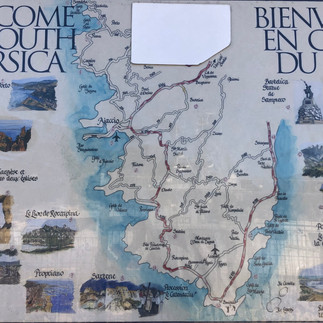



















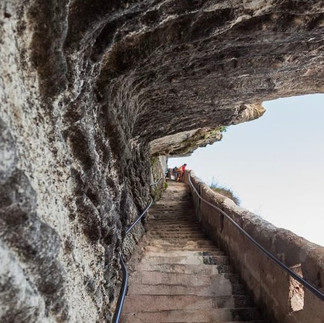


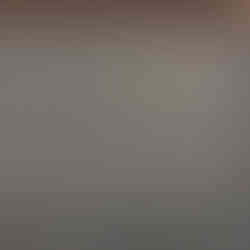

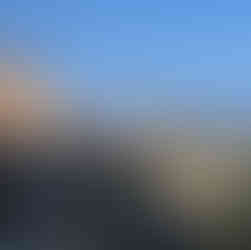


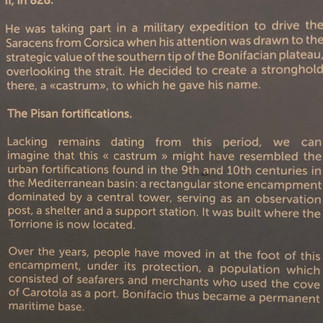


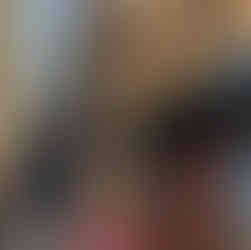





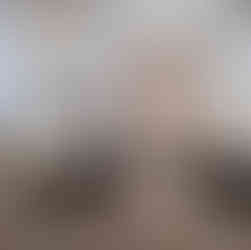






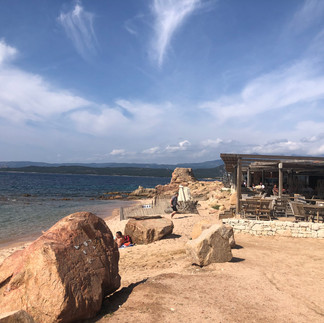


Comments